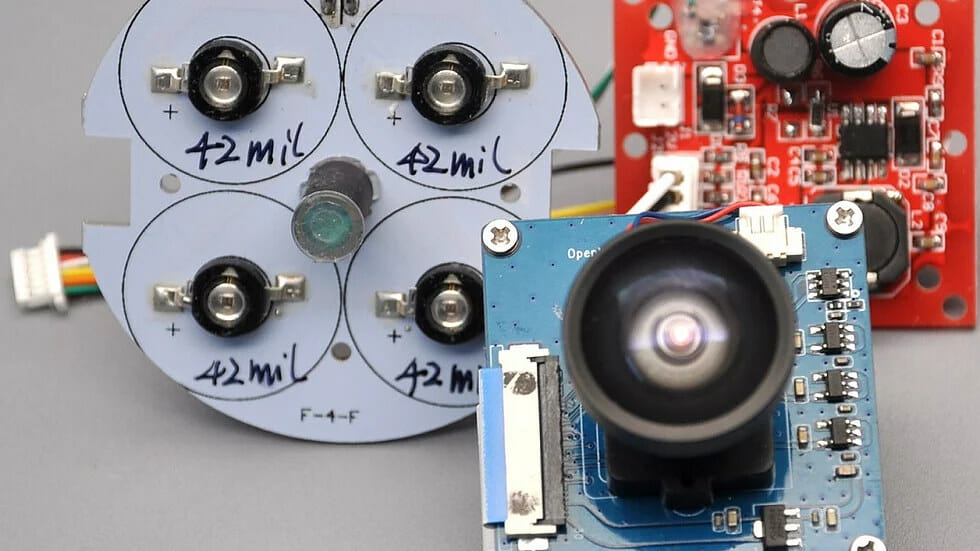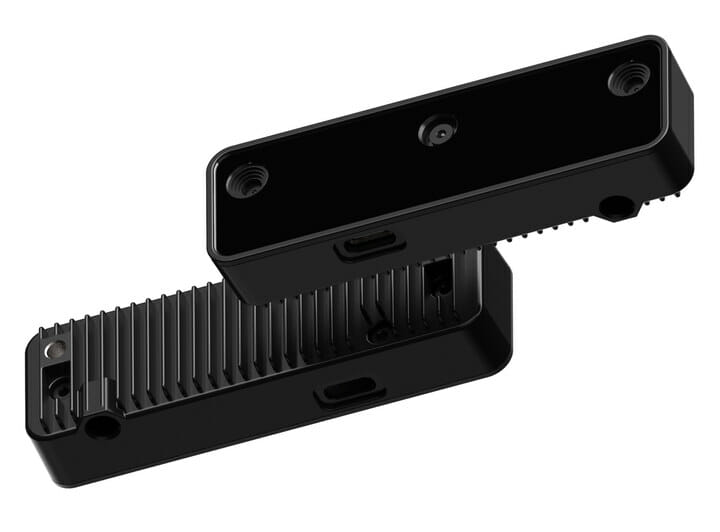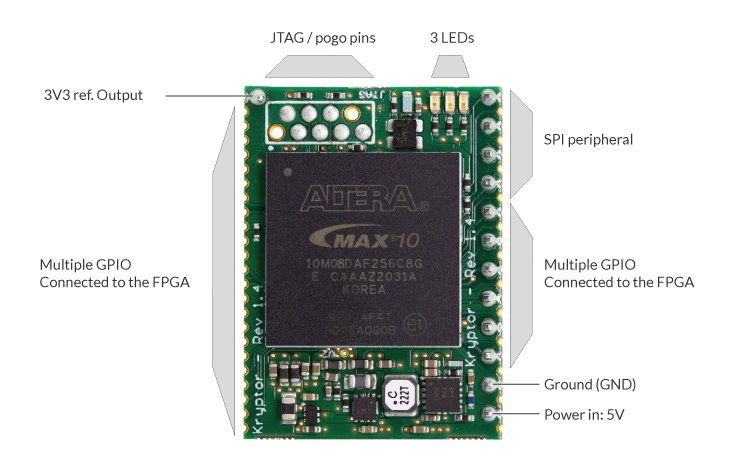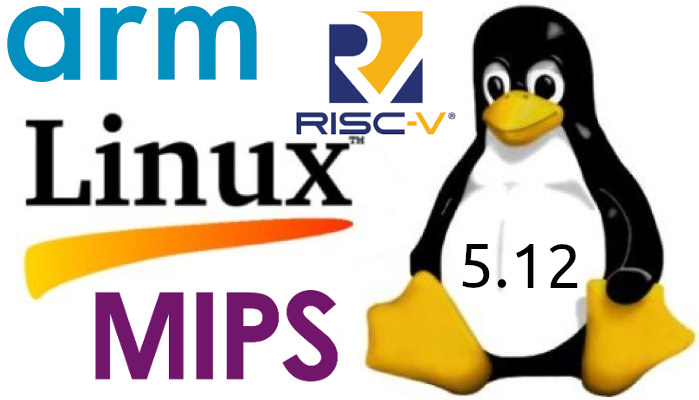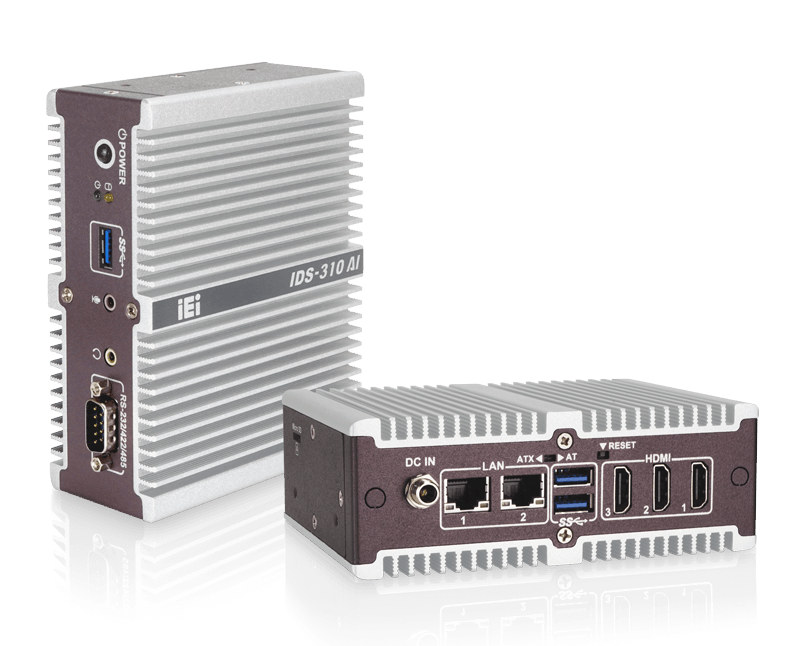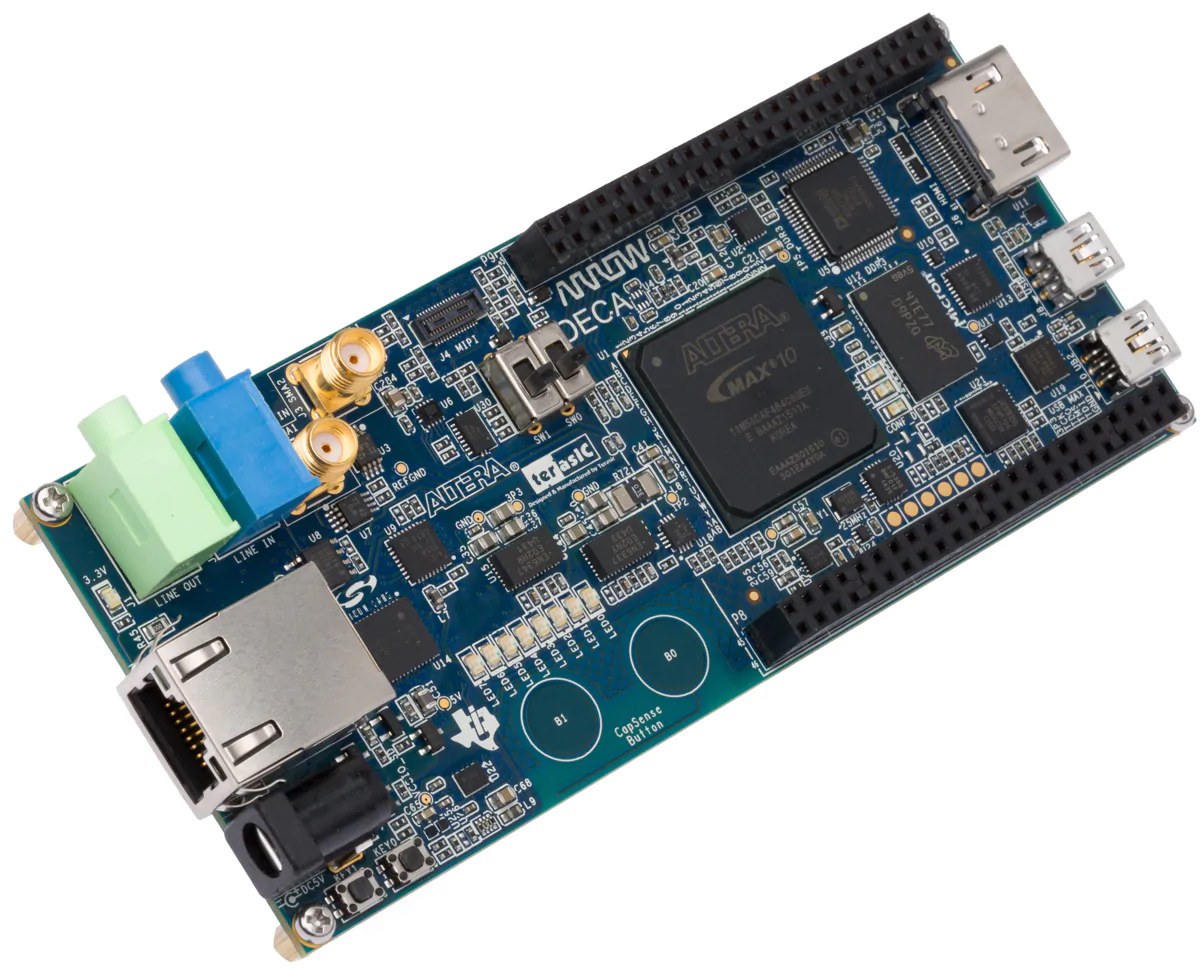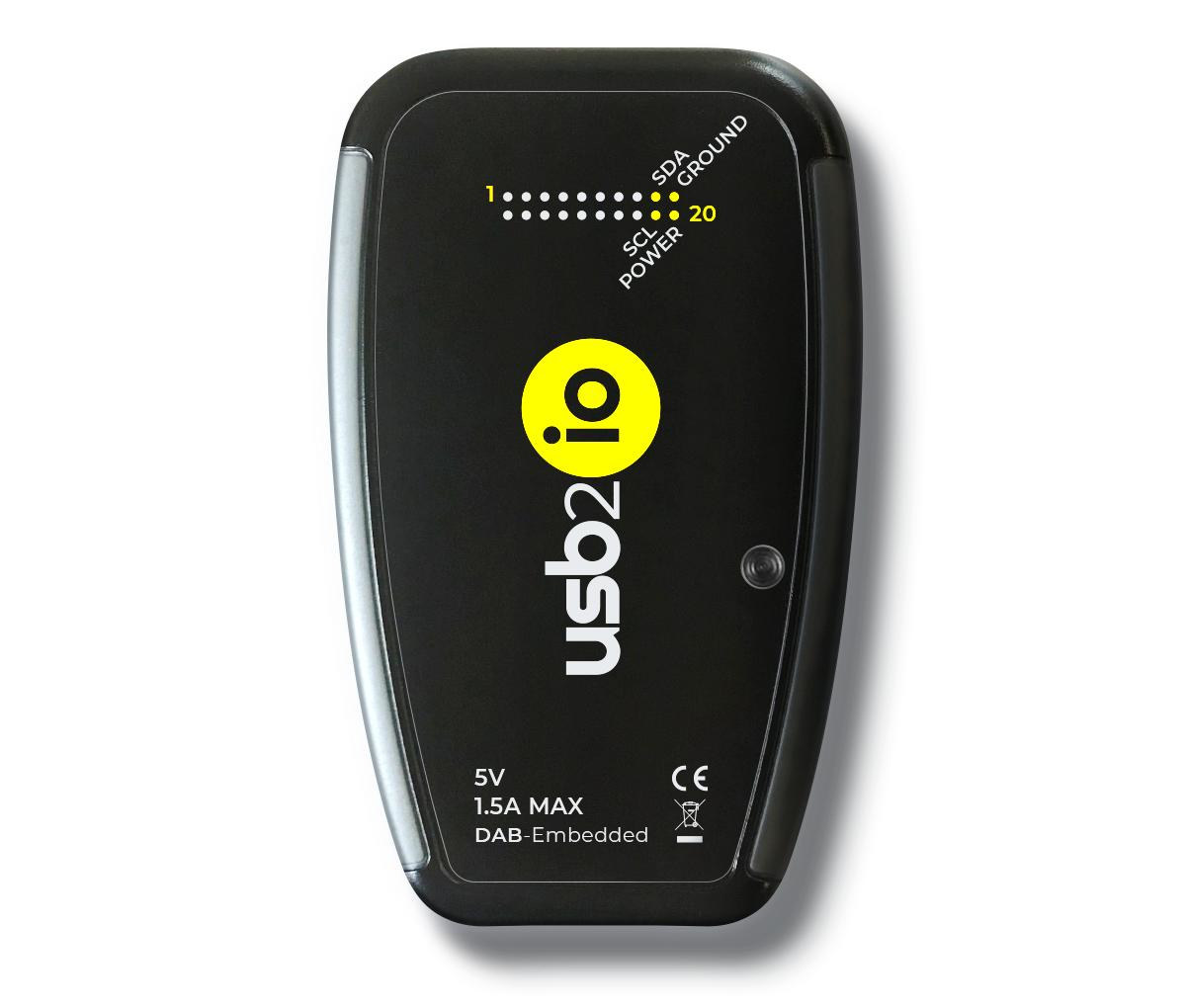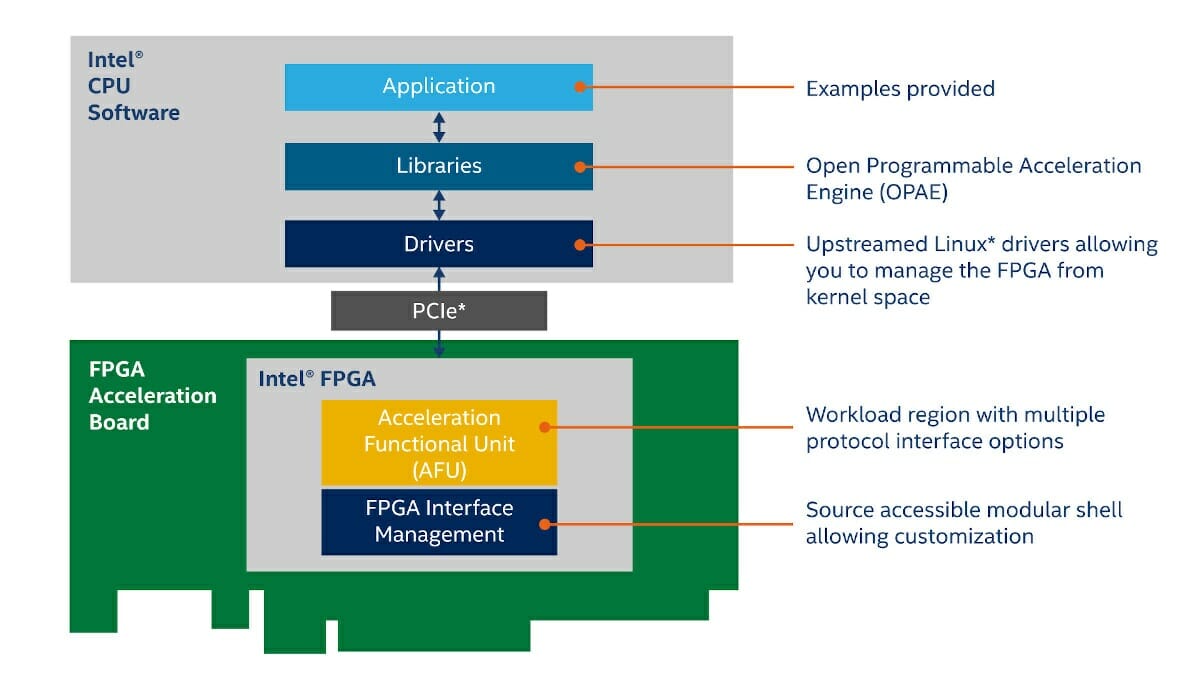We’ve just written about OpenCV Ai Kit Lite computer vision camera based on Intel Myriad X VPU, and OpenNCC Nighthawk is another such programmable camera based on the Intel AI accelerator, but with an IR filter for night vision, and working with OpenNCC-SDK notably supporting real-time face blurring for enhanced privacy. OpenNCC Nighthawk specifications: VPU – Intel Movidius Myriad X MA2085 up to 4 TOPS RAM – 8 Gbits (1GB) LPDDR4 Camera 2MP camera up to 1920 x 1080 @ up to 30fps ~114° Field of View (DFOV) 2.2mm focal length Lens TTL (through the lense) – 24mm Mount – M12 x 0.5mm thread size Day&Night IR Filter – Solenoid excitation type, automatically switch between 0.1~2 lux IR LED – 850nm up to 5m Output Data format – YUV420, YUV422, MJPG, H.264 Misc – Reset, GPIO Host Interface – USB 3.1 TYPE-C port Temperature Range – 0°- 50° The camera […]
OpenCV AI Kit Lite – A compact 4K Tri-camera kit for computer vision applications (Crowdfunding)
The OpenCV AI Kit “OAK-D” now has a little brother with the OpenCV AI Kit Lite equipped with the same Intel Myriad X-based DepthAI solution with three cameras, but in a much compact form factor and a price slashed to as low as $79 and up. Like its predecessor, the OpenCV AI Kit leverage the Myriad X AI accelerator’s capabilities to provide a wide range of real-time computer vision applications, and can be programmed with C++ or Python APIs, as well as graphical user interfaces. OpenCV AI Kit Lite (OAK-D Lite) specifications: Intel Myriad X-based DepthAI with 4 TOPS of AI performance Cameras (made by ArduCam) Color Camera IMX214 (PLCC) with 4208×3120 resolution, 1.348:1 aspect ratio 1/3.1 inch Lens size 81.3 degrees DFOV Focus range 8cm – ∞ Stereo Camera specifications: Omnivision OV07251-G04A-1E (COB) with 640 x 480 resolution, 1.333:1 aspect ratio 1/7.5 inch lens size DFOV: 85.6,HFOV: 72.9, VFOV: […]
Kryptor FPGA – Tiny MAX10 FPGA board works as a hardware security module (Crowdfunding)
Kryptor FPGA, sometimes just called Kryptor, is a compact Intel/Altera MAX10 FPGA development board mostly designed for encryption, and acting as a dedicated Hardware Security Module (HSM) with a custom soft-core from Skudo OÜ. But obviously, you could also use the FPGA board for other purposes. Hardware encryption can be quite more secure than software-based encryption with reduced attack surfaces, especially since data processing can be done in the FPGA RAM. The HSM can be used to encrypt files, videos, emails, IoT messages, etc… from various hardware platforms including Arduino and Raspberry Pi boards. Contrary to closed-sourced commercial solutions, the soft-core is open-source and as such can be verified by third parties to make sure there aren’t any backdoors or security flaws. Kryptor FPGA specifications: FPGA – Intel/Altera MAX10 8K LE ( 10M08DAF256C8G) FPGA @ 100 MHz with 8000 logic elements (LE), 1376 Kb flash, 378 Kb total RAM, up […]
Linux 5.12 – Main Changes, Arm, MIPS and RISC-V Architectures
Linux 5.12 release was expected last Sunday, but Linus Torvalds decided to release one more release candidate, namely Linux 5.12-RC8, to “make sure things are all settled down“, so the latest Linux kernel is now expected this weekend. Tihs should not yield any significant changes, so we can check what’s new in Linux 5.12, notably with regards to Arm, MIPS, and RISC-V architectures often used in SoC’s found in embedded systems. Around two months ago, the release of Linux 5.11 added support for Intel’s software guard extensions (SGX) and Platform Monitoring Technology (PMT), AMD “Van Gogh” and “Dimgrey cavefish” graphics processors, MIPI I3C host controller interfaces, and much more. Some interesting changes in Linux 5.12 include: Added support for ACRN hypervisor designed for IoT & embedded devices Added support for Playstation DualSense & Nintendo 64 game controllers, as well as Nintendo 64 data cartridges Dynamic thermal power management via a […]
AI digital signage system combines Apollo Lake SoC with Myriad X AI accelerators
Digital signage players were traditionally used to display photos and text, play some videos, or PowerPoint presentations. But like with so many other devices, they can also be enhanced with artificial intelligence with, for instance, facial recognition enabling more personalized information, weather detection showing targeted advertisement (umbrella when it rains, sunglasses on sunny days…), and other data collection. IEI IDS-310AI fanless AI digital signage system can enable these types of features thanks to an Intel Celeron J3455 Apollo Lake processor combined with two Myriad X VPU’s, and the ability to drive three displays through HDMI. IDS-310AI digital signage mini PC specifications: SoC – Intel Celeron J3455 quad-core processor @ 1.5GHz / 2.3GHz (Turbo); 10W TDP System Memory – 1 x 204-pin DDR3L SO-DIMM, 8 GB pre-installed Storage – 128GB SATADOM, MicroSD card slot Video Output – 3x HDMI 1.4b ports up to 3840×2160 @ 30Hz each Audio – 1x Mic […]
Arrow DECA Max 10 FPGA development board offered for $37 (Promo)
Arrow DECA evaluation board, featuring Altera’s MAX 10 FPGA and Enpirion power solutions, was launched in March 2015 and sold for around $169 at the time. Time has passed with Intel purchasing Altera FPGA business later that year, and the price of the board dropped to $65 as listed on Intel website. But now Arrow is offered the DECA FPGA for just $37, and you can also get fast free shipping if you’re a member of ArrowPerks loyalty program. Arrow DECA development board specifications: FPGA – Intel MAX 10 (10M50DAF484C6G) device with 50K logic elements, 1,638 Kbit block memory, 5,888 Kbits user flash memory, 4x PLLs System memory – 512MB DDR3 SDRAM (16-bit data bus) Storage – 64MB QSPI Flash, MicroSD card socket Video Output – HDMI v1.4 including 3D video support Audio – 24-bit audio CODEC with line-in, line-out jacks Camera – MIPI connect for camera module Connectivity – […]
USB2IO high-speed interface explorer tool combines Intel Cyclone 10 FPGA and STM32H7 MCU
In the second part of 2020, we’ve seen a fair amount of USB debugging tools for electronics designers and hardware hackers including the Glasgow Interface explorer with an ICE40 FPGA. But if you need even more flexibility or higher I/O speeds (up to 300 MHz), DAB Embedded USB2IO interface explorer should help thanks to the combination of an STMicro STM32H7 MCU and an Intel Cyclone 10 FPGA. USB2IO interface explorer hardware specifications: MCU – STMicro STM32H743 Arm Cortex-M7 @ 480MHz CPU clock An external 64MB QSPI flash for extra FPGA code storage; FPGA – Intel Cyclone 10LP (10CL040) with 40k logic elements, 1,134 Mbit embedded memory, 126 DSP blocks External memory – 32MB SDRAM for MCU and FPGA (64MB in total) Storage – 64MB QSPI for connected to MCU for FPGA code storage I/Os via 20-pin external header/connector 16 x GPIO mode (single-ended), 8x LVDS pair mode or a mix […]
Intel unveils eASIC N5X Structured ASIC, and the Open FPGA Stack
Intel’s virtual FPGA Technology Day 2020 is taking place today, and the company made two announcements before the event. First, the company introduced the new Intel eASIC N5X structured eASIC family with an Intel FPGA compatible hard processor system to design to quickly create applications across 5G, artificial intelligence, cloud, and edge workloads. In addition, Intel also announced the Intel Open FPGA Stack (aka Intel OFS), a scalable, open-source (intel calls it “source-accessible”) hardware and software infrastructure available through git repositories design to ease the work of hardware, software, and application developers. Intel eASIC N5X eASIC N5X is the first structure ASIC from the company to integrate an Intel FPGA compatible Quad-core Armv8 hard processor system. The new chips will help customers bring custom solutions faster to market compared to traditional ASICs thanks to the FPGA fabric, and at a cheaper cost and with up to 50% lower core power […]


